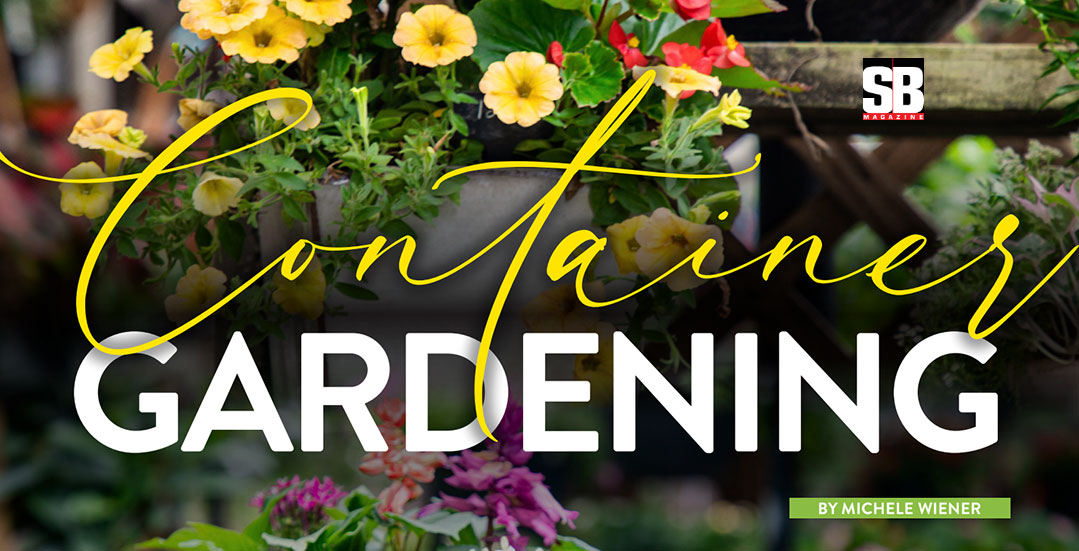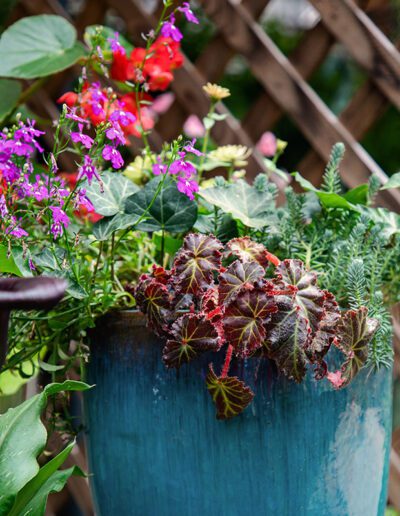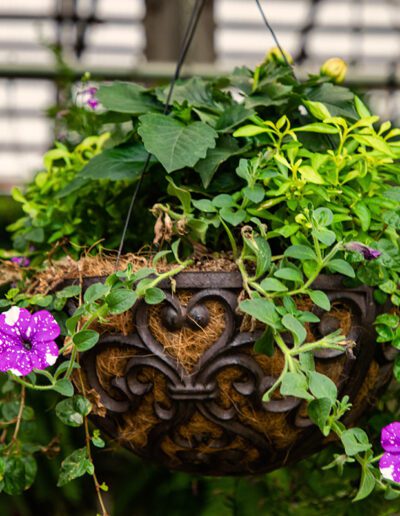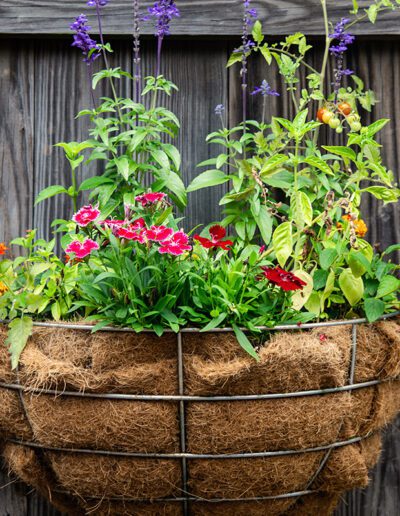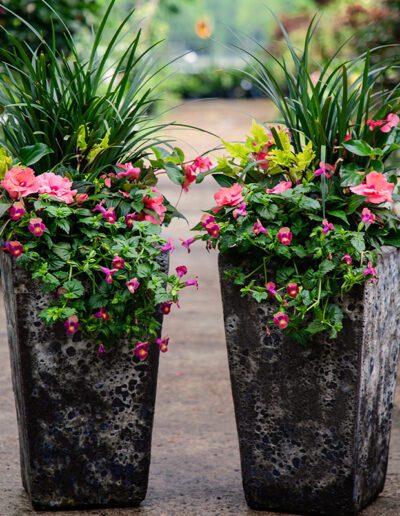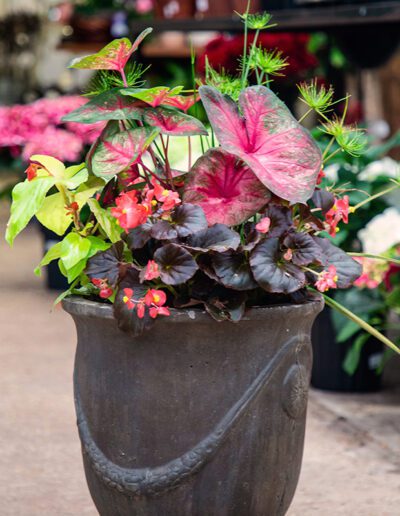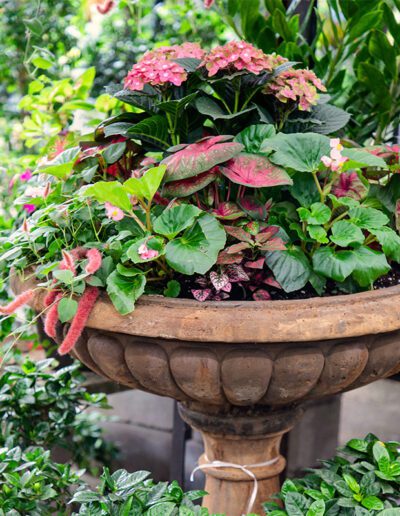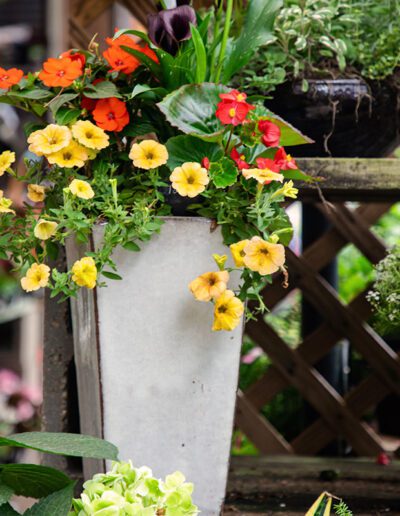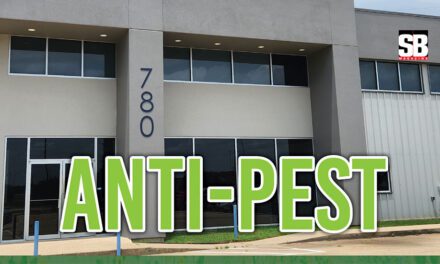Why do people love growing plants in containers? Because there are so many options of what you can do with them! Plants can be placed in any number of locations in a variety of shapes, sizes, and containers. But it’s important to note that a container grown plant requires more attention than that same plant growing in the ground.
Location
Container gardening can brighten up a patio, balcony, or window. Garden design becomes mobile with container gardening. You can move the pots around to decorate a front door, patio, pathway, or garden. You can put pots of annuals in a garden of faded perennial plants to add a quick blast of color and cover. You can grow fruit trees, vegetables, and herbs year-round in pots. Even if you have limited space, you can still have a beautiful garden!
Containers
Almost any container can be used for container gardening. Outdoor flowerpots come in many different sizes and materials such as wooden, plastic, clay, ceramic, and metal. The container should fit the plant and allow room for at least a season of growth. The general rule of thumb is the bigger the container, the better. I had great success with potatoes this spring with 15-gallon reusable fabric nursery pots. Self-watering containers are a trend in container gardening. These come in all shapes and sizes from hanging baskets to window boxes and all the way up to self-watering raised beds. If containers will receive full sun, make sure they are at least 16-20 inches in diameter. Smaller sizes like 12-16 inches will work if afternoons are partially shaded.
Hanging Baskets
Hanging baskets are another popular method to add interest and gardening space. There are many types of hanging containers available from growing bags to the more decorative peat moss and coconut fiber baskets. Sheppard’s crooks are popular devices for hanging containers. They come in many styles and are portable, allowing you to add a hanging basket where there is no tree limb or other overhang.
Potting Mix
A lightweight potting mix should be used for container gardening. oil straight from the garden shouldn’t be used in a container because it is usually too heavy, and clay soil should be avoided. The soil should be porous in order to support the plants because the roots require both air and water. Packaged potting soil available at local garden centers is relatively lightweight.
Water and Fertilizer
One of the main drawbacks to container gardening is the fact that your plants will need continual watering and fertilizing. The roots of the plants are confined in the container, and they use all the water that is available to them. Also, remember that with the constant watering, many of the nutrients in the soil are leached when the water drains out of the bottom of the container. There are some good all-purpose fertilizers on the market. Slow-release fertilizer needs to be added at planting time and should be thoroughly incorporated in the soil mix. Look for a complete balanced type such as a 10-10-10 formulation. Water-soluble fertilizers are added about mid-season when the plants begin to produce or bloom. A fertilizer that is higher in phosphorus (P), will stimulate blooms. You can also use manure or compost for organic container gardening.
Watering your plants this time of year is obviously a real concern and many may need to be watered twice a day. For those with automatic watering systems you can add a small hose and sprinkler through the watering system, and this will take care of watering, especially while you are out of town.
Thank you to Akin’s Nursery & Landscape for the containers and arrangements in the photos!




